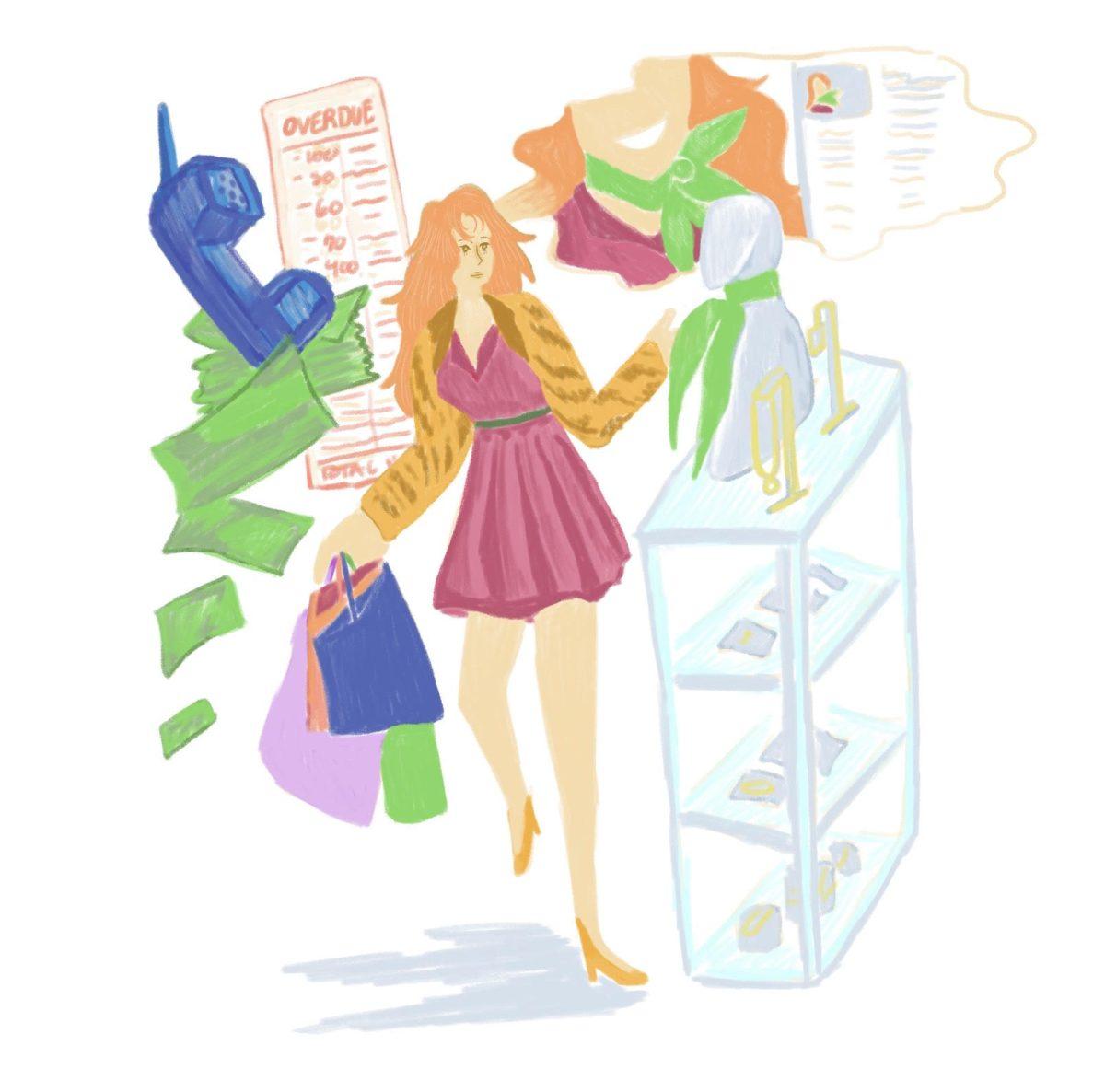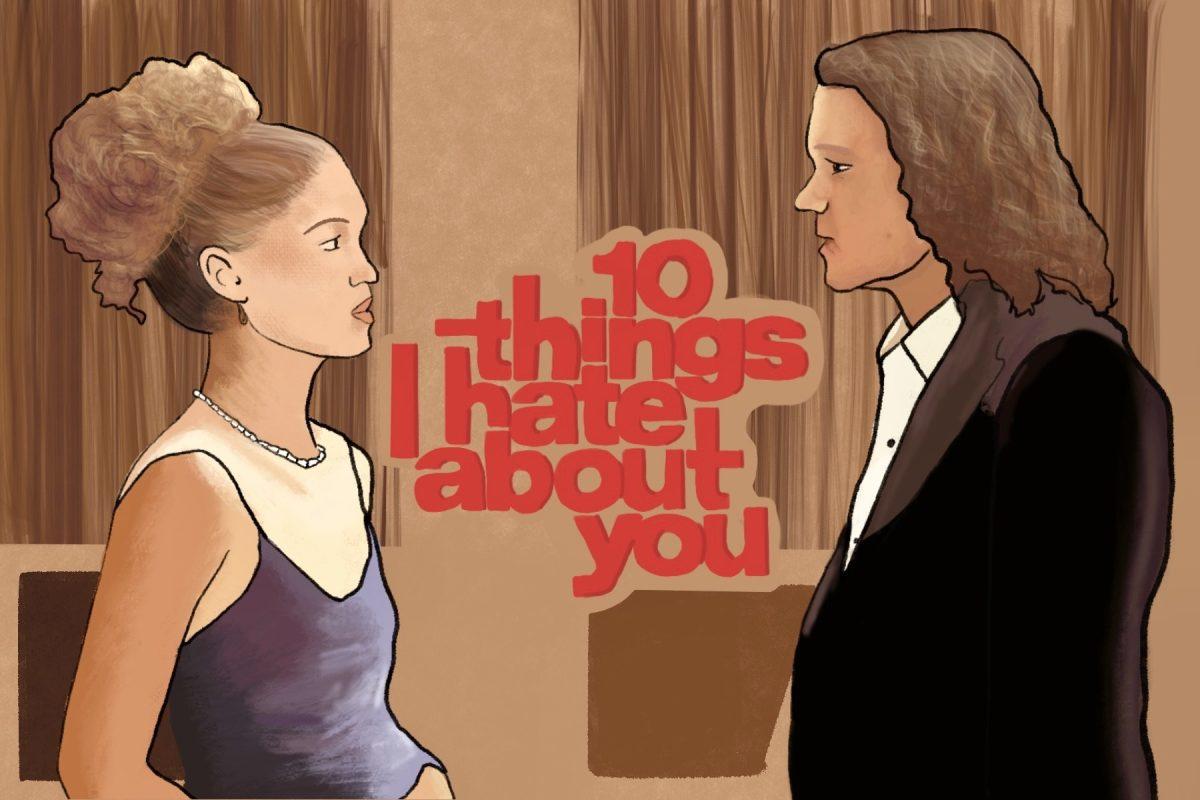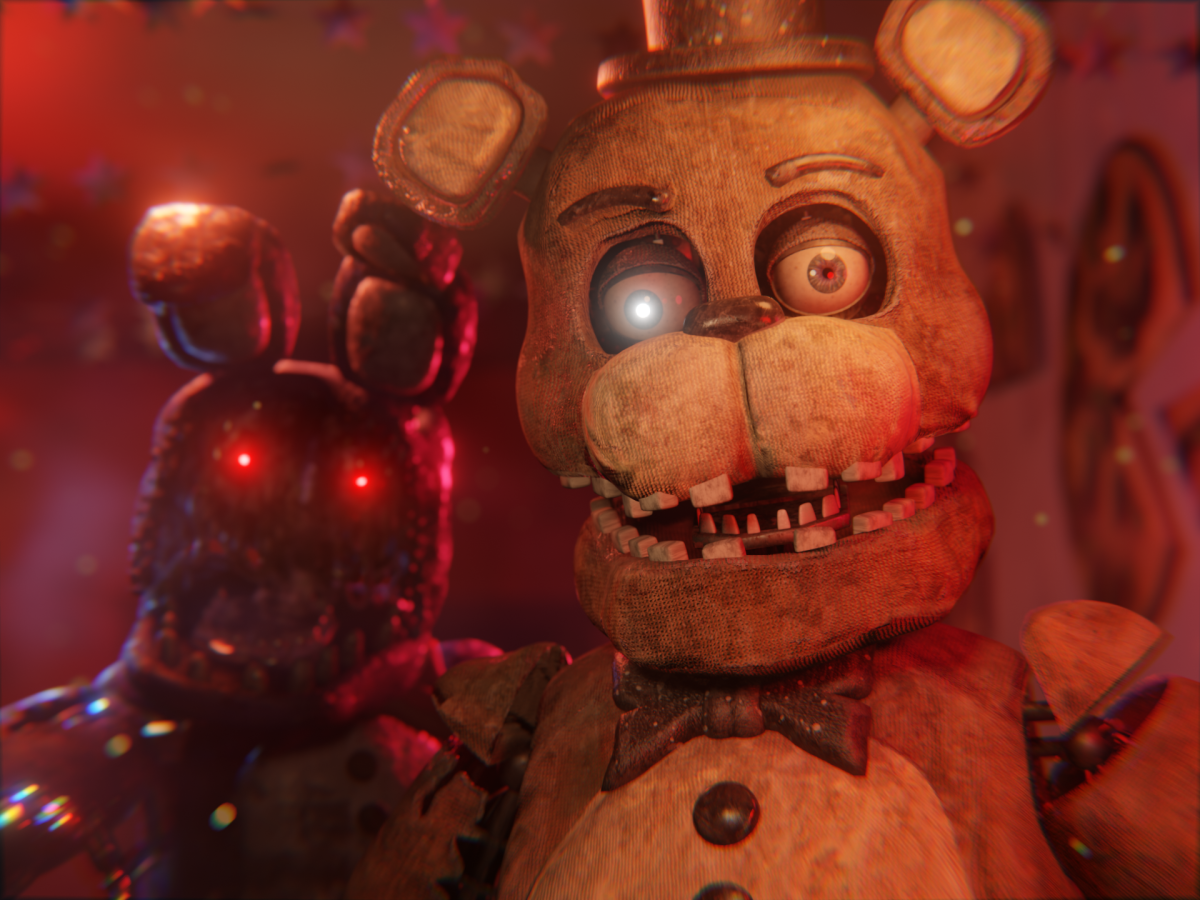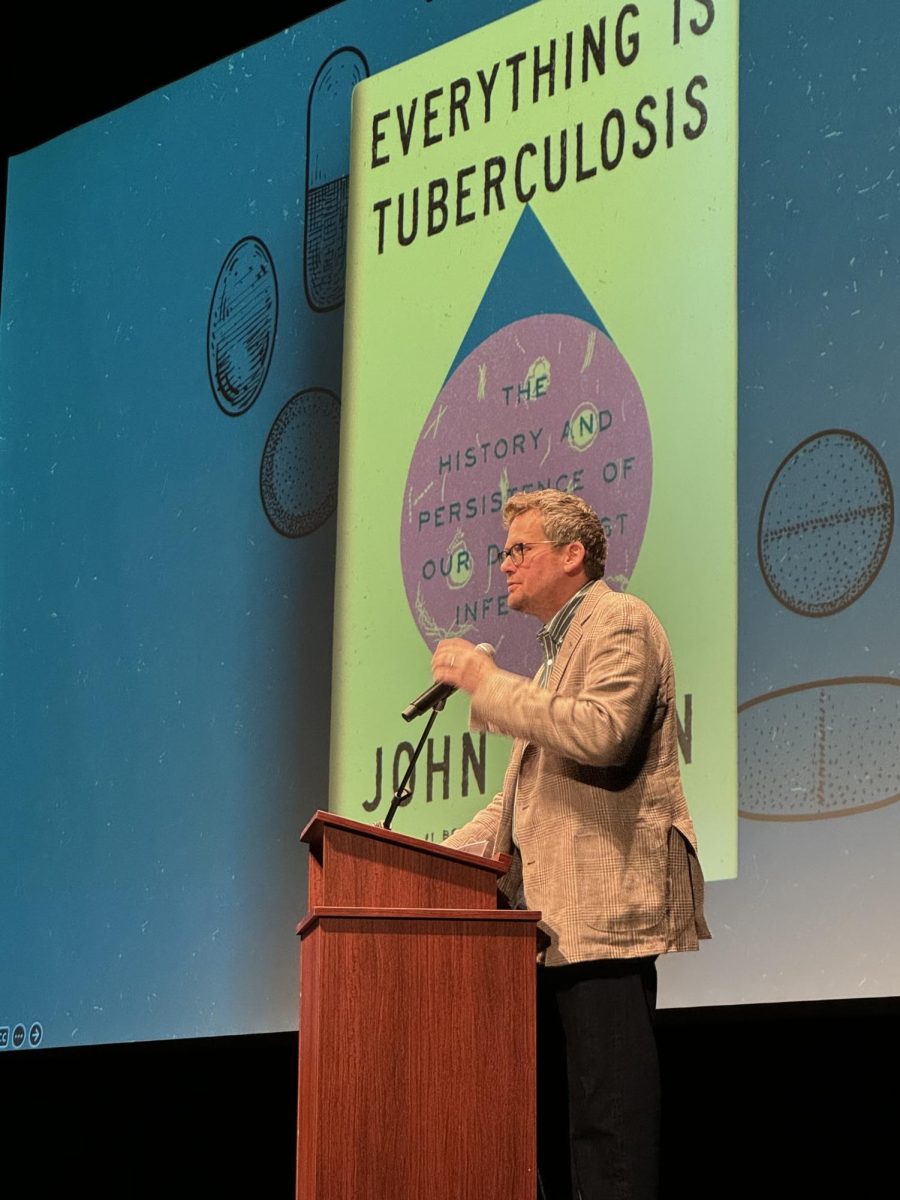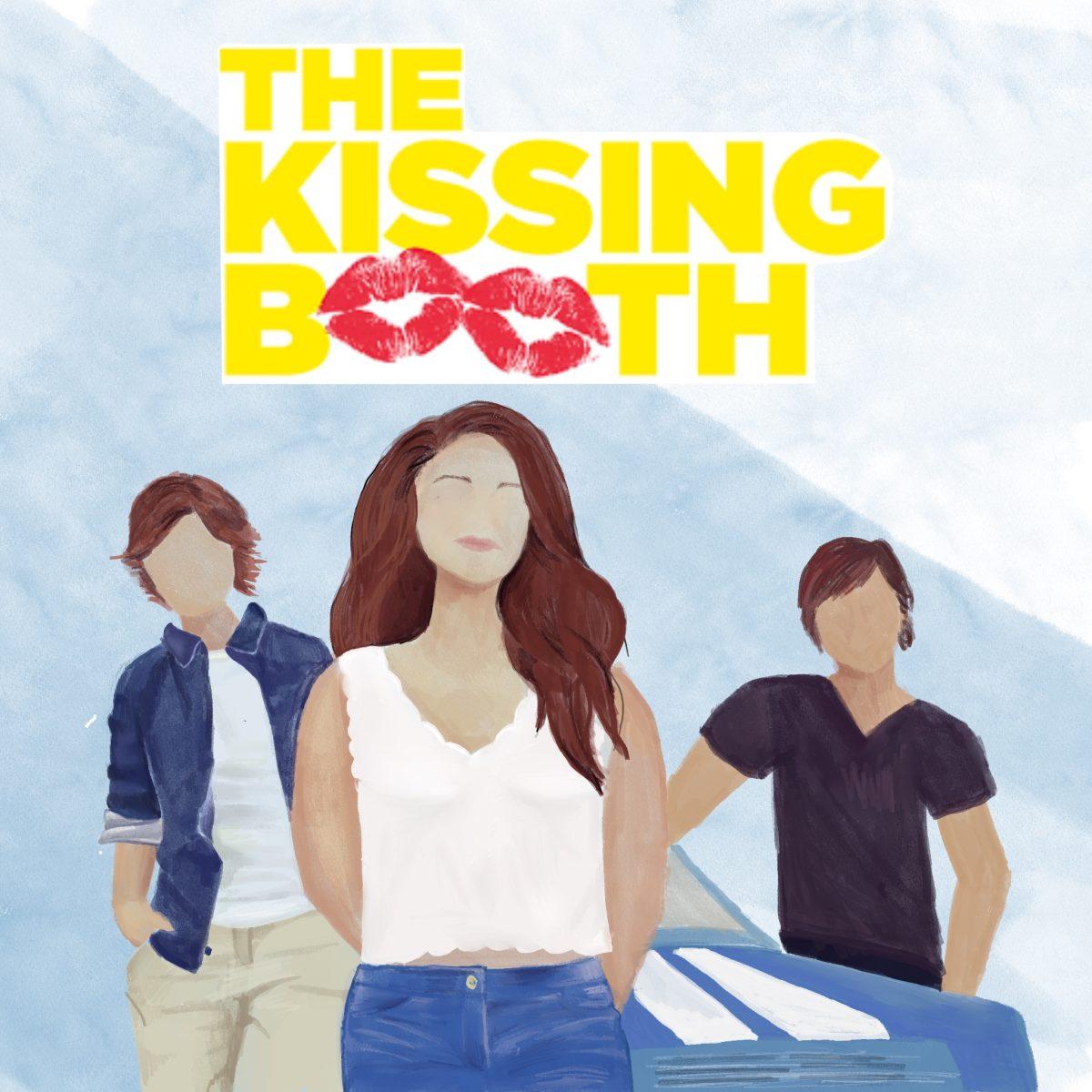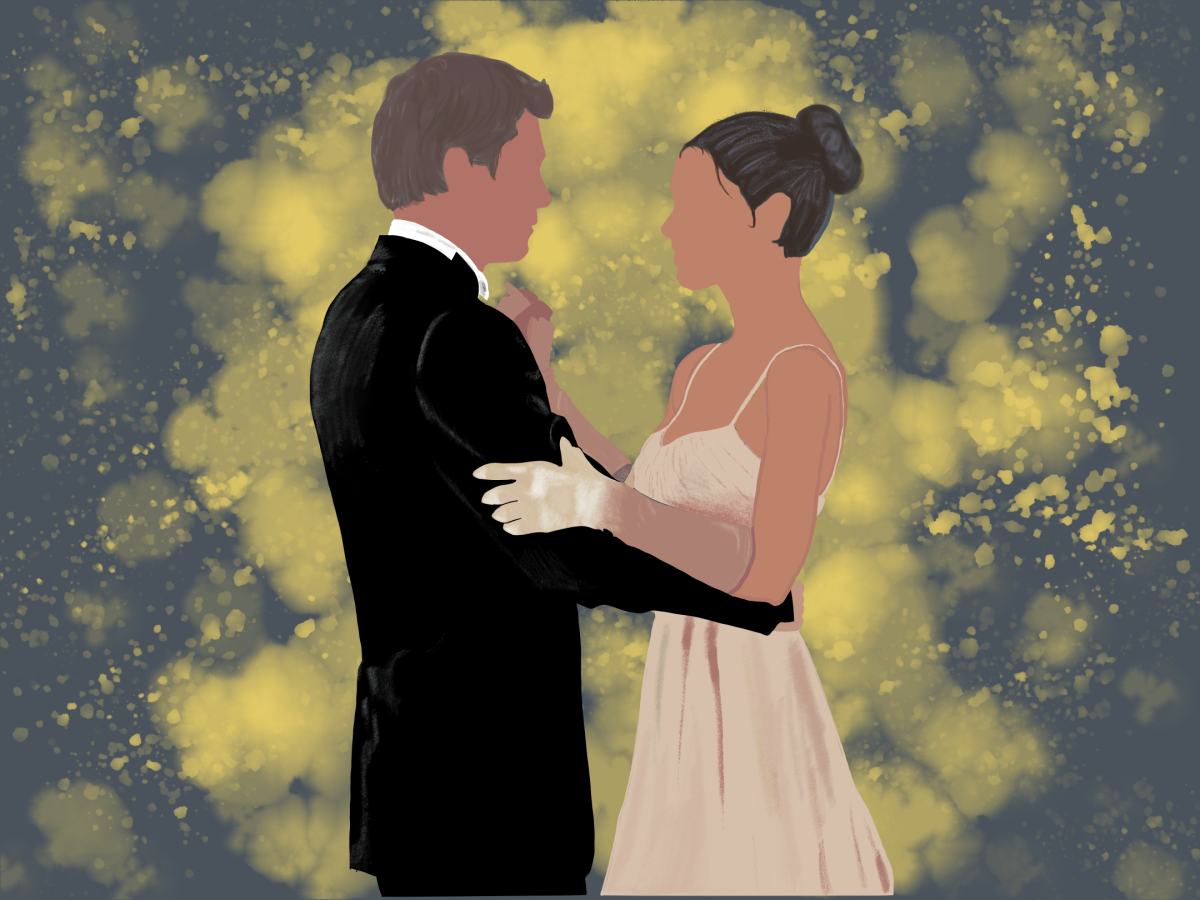The 2009 romantic comedy Confessions of a Shopaholic opens with protagonist Rebecca Bloomwood in a lust-filled stupor, walking by racks of clothing, arms adorned with shopping bags. Her wide eyes and incredulous voiceover paint an almost primal need for new clothes, akin to the initial delusion upon seeing an attractive potential partner.
But our vision of the carefree Rebecca is quickly interrupted once it is shared that she spent $900 on just one of her credit cards, revealing her dire financial situation. Shopaholism is an addiction, comparable to substance addiction, but is still brushed aside in society. With rampant consumerism, never-ending advertisements, and political figures encouraging citizens to spend away their paychecks, who isn’t a little bit of a shopaholic?
Rebecca is, admittedly, an exaggerated archetype of this phenomenon. For example, on her way to an interview with fashion magazine Alette, she spots a green scarf and questions whether she should buy it—mere days after she realizes she’s gained $900 in debt. The film portrays the mannequin convincing her that the green scarf is exactly what an Alette journalist would wear, introducing the idea that clothes embody a life of their own. In fact, research shows that clothing can impact one’s confidence levels: wearing a suit increases comfort for those in work environments, while casual clothes increase confidence when socializing.
Rebecca decides to purchase the green scarf, but ends up $20 short, which leads to her holding up a hot dog stand asking for extra cash. She even lies about her reason for getting the scarf, saying it’s a gift for her sick aunt. This tendency to lie persists in other aspects of her life, such as when she claims that she speaks fluent Finnish on her resume.
It’s important to note that Rebecca is not merely irresponsible, but a victim of easy shopaholism in a consumerist society. Explaining her habits, she says, “When I shop the world gets better. The world is better. And then it’s not anymore. And I need to do it again.” Compulsive shopping can have serious consequences, like financial and legal trouble, strained relationships, and declined working ability. Shopaholism is often coupled with a lack of financial literacy, which disproportionately affects women and other marginalized communities.
These consequences are skillfully portrayed in Confessions of a Shopaholic. Throughout the movie, Rebecca is followed by debt collector Derek Smeath, who is determined to get the nearly $10,000 she owes. Rebecca has been avoiding his calls for months, giving excuses every time he pushes further. Furthermore, due to the number of these calls, Rebecca lies to her boss and love interest, Luke Brandon, that Smeath is actually her scorned ex-boyfriend. At her job, she omits the fact that she’s thousands in debt while writing a column giving financial advice.
When her best friend, Suze, urges Rebecca to control her shopaholism, Rebecca pretends to throw her clothes out but actually hides them in a closet. Rebecca even accidentally gives away the bridesmaid’s dress she was supposed to wear to her Suze’s wedding, shattering their relationship. Soon enough, her mistakes catch up to her when Smeath humiliates her on live television, exposing her debt during an interview. This ruins her romantic relationship with Luke, who feels betrayed by her lies.
Ultimately, Confessions of a Shopaholic drives home two main points. For one, despite Rebecca’s personal growth regarding her shopaholism, society at large is still hopelessly focused on consumerism. Near the movie’s middle, Rebecca attends a sale flooded with violent shoppers and general chaos. At the end, when Rebecca organizes a sale for her excess clothes, the feral air of hundreds of desperate shoppers is still evident. Secondly, Rebecca never truly parts with the green scarf, the representation of her shopaholism. She writes her financial advice column as “The Girl in the Green Scarf,” making the scarf a presentation of herself. At her sale, she struggles to transfer the scarf to the buyer, which is natural because one can’t get over their shopaholism in one grand gesture. However, in the final scene of the movie Luke reveals that he anonymously bought the scarf because it meant so much to her, emphasizing the continued importance of clothing to Rebecca. In fact, the movie’s last seconds showcase everything fading to black but the green scarf, firmly associating the cloth with Rebecca’s identity.
At the movie’s conclusion, Rebecca isn’t restrained by her debt and repairs her relationship with Suze and Luke. She’s learned from her financial issues, showing her transformation from indulgent city girl to a woman truly aware of consumerism and its influence in society. Her character reminds viewers that, just like a scarf can be suffocating if used incorrectly, so can money. With an impressive portrayal of modern-day consumerism, Confessions of a Shopaholic includes financial lessons along with a sweet love story.




































































